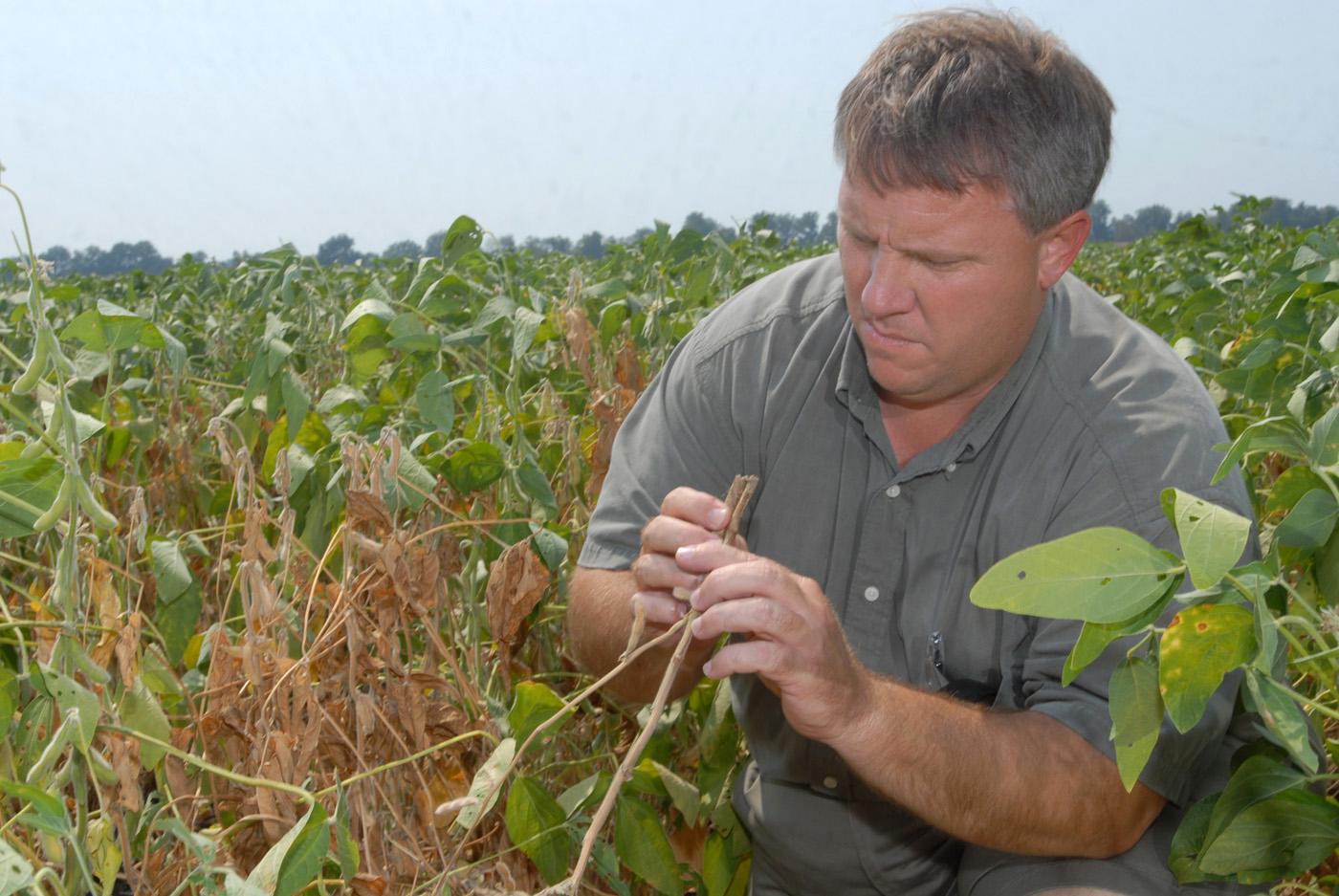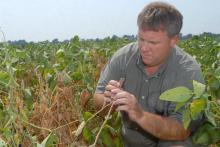Information Possibly Outdated
The information presented on this page was originally released on August 25, 2006. It may not be outdated, but please search our site for more current information. If you plan to quote or reference this information in a publication, please check with the Extension specialist or author before proceeding.
Drought, heat hurts most agricultural commodities
MISSISSIPPI STATE -- Mississippi's row crops, catfish, timber and cattle are all feeling the impact of the 2006 drought and heat.
Bart Freeland, a physical scientist for the U.S. Department of Agriculture's weather facility in Stoneville, said many row crops need at least 20 inches of water, and some can use almost twice that amount in a growing season.
“We got sufficient rain early in the season, but when it came time for filling pods and bolls in June and July, many producers didn't get the precipitation they needed,” Freeland said. “Some parts of the Delta are running more than a 10-inch deficit.”
Freeland said the period from March through July was the second driest for the state since record-keeping started in 1895. This year was the 10th driest June and July on record.
“Most areas of the state, except for the Coast, started the year with adequate rainfall, but that started changing in April. The drought intensified in June and continues now across the entire state,” said Freeland, who is based at Mississippi State University's Delta Research and Extension Center. “Two-thirds of the state is in a severe drought stage with the south Delta in an extreme drought. Only the southwest corner of the state is considered in a moderate drought.”
Steve Martin, an MSU agricultural economist at the Stoneville center, said the lack of rain in the later growing months will cause an increase in production costs for all crops.
“Certainly between the drought and the heat, crops were a lot more expensive to produce because people had to irrigate more,” Martin said. “With diesel fuel running about 40 percent higher than last year, growers are also facing higher costs for harvesting.”
MSU soybean specialist Dan Poston said soybeans are seeing some of the biggest losses this season, especially in fields that were not irrigated or where irrigation was mismanaged. He estimates the overall state average for soybean yields will be about six bushels lower than last year's 37 bushels per acre.
Lyle Pringle, an MSU associate agricultural engineer who researches irrigation in cotton and corn production systems, said cotton yields also are expected to be down in the state, especially in nonirrigated, or dryland, cotton.
“A lot of nonirrigated cotton has just crashed,” Pringle said. “It is wilted, and it generally quit developing sooner than its irrigated counterpart.”
Pringle said corn seemed to miss some damage caused by the late summer heat.
“I don't think the heat affected the corn as much as it affected the cotton because the temperature didn't really start getting that hot until toward the end of July, after the corn had matured,” the researcher said.
MSU rice specialist Nathan Buehring said rice, unlike other crops this season, actually may do well. The problems Mississippi rice producers faced this summer were kernel blanking and finding water sources for flooding.
“There is the potential, due to the heat that we've had, to have blanking and reduced yields, but we haven't gotten in enough rice to really know if that's going to be an effect of it,” Buehring said. “Prices will need to be good because producers are going to need rice to pay a good bit of bills this year.”
The summer's drought has affected the catfish industry as well. In east Mississippi where producers build deeper ponds and rely on runoff and rainfall to keep winter rain-filled ponds full, the lack of rain has significantly lowered water levels. High temperatures pushed catfish pond temperatures to the mid-90s.
“The hot water does not hurt them physically, but their appetite is not good,” said Charlie Hogue, Extension catfish production specialist. “Catfish feed floats on the top of the water. Those top 6 to 8 inches of water are scorching hot, and the catfish don't want to swim up there to eat.”
South Mississippi's timber industry is experiencing its worst bark beetle outbreak in more than a decade. High temperatures, drought and forest fires are combining with the woody debris caused by Hurricane Katrina to create ideal conditions for the invasion.
“Pine trees are severely stressed due to the hurricane and the drought that followed,” said Glenn Hughes, MSU Extension forester. “Pine bark beetle populations exploded immediately after Katrina as beetles infested snapped pine trees. Last fall, these beetles moved into isolated live trees due to the post-Katrina drought.”
Coastal areas subjected to the storm surge from Katrina have the greatest tree mortality, with thousands of dead trees documented in the area.
John Anderson, MSU Extension agricultural economist, said the expanse of this drought, which is worse in the major cattle-producing states of Texas and Oklahoma, will impact the cattle market and the previous national herd expansion.
“Many producers will have a hard time maintaining the herds they have, much less expanding,” Anderson said. “In the long term, a reduction in beef cattle numbers will help market prices, but in the short term, the forced sales of more cattle will hurt, especially at the local market levels.”
The drought will affect supply and demand for stocker and feeder calves this fall. Rains will be essential for any potential for winter grazing in key cattle-producing areas.








